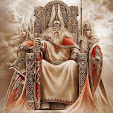The United States is a federal republic in which the president, Congress, and federal courts share powers reserved to the national government according to its Constitution. The federal government shares sovereignty with the state governments. The executive branch is headed by the President and is formally independent of both the legislature and the judiciary.
The cabinet serves as a set of advisers to the President. They include the Vice President and heads of the executive departments. Legislative power is vested in the two chambers of Congress, the Senate and the House of Representatives. The judicial branch (or judiciary), composed of the Supreme Court and lower federal courts, exercises judicial power.
The judiciary's function is to interpret the United States Constitution and federal laws and regulations. This includes resolving disputes between the executive and legislative branches. The federal government's structure is codified in the Constitution. Two political parties, the Democratic Party and the Republican Party, have dominated American politics since the American Civil War, although smaller parties exist such as the Libertarian Party, the Green Party, and the Constitution Party.
Generally, the Democratic Party is commonly known as the left-wing party within the United States, while the Republican Party is commonly known as the United States'right-wing party. There are a few major differences between the political system of the United States and that of most other developed democracies. These include greater power in the upper house of the legislature, a wider scope of power held by the Supreme Court, the separation of powers between the legislature and the executive, and the dominance of only two main parties.





